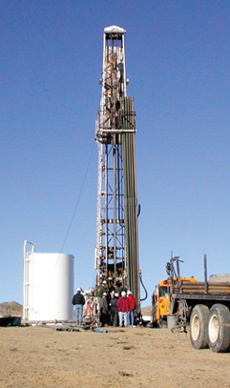
Geotimes Home | AGI Home | Information Services | Geoscience Education | Public Policy | Programs | Publications | Careers

 On federal lands in
the Rocky Mountain region, the story is gas — natural gas and lots of it.
And most of the area’s natural gas is available with minimal leasing restrictions,
according to a government survey released in January. Until now, industry and
policymakers have not known the extent of regulations preventing the development
of oil and gas on these federal lands.
On federal lands in
the Rocky Mountain region, the story is gas — natural gas and lots of it.
And most of the area’s natural gas is available with minimal leasing restrictions,
according to a government survey released in January. Until now, industry and
policymakers have not known the extent of regulations preventing the development
of oil and gas on these federal lands.  |
Geotimes Home | AGI Home | Information Services | Geoscience Education | Public Policy | Programs | Publications | Careers |